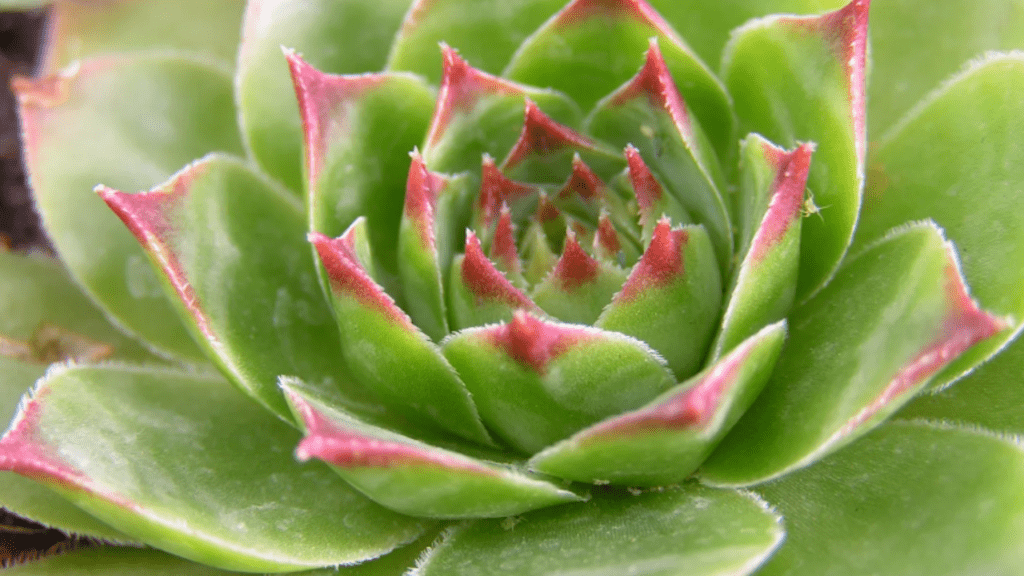
Houseleek Plant: A Complete Guide to Cultivation and Benefits
The houseleek plant, also known as Sempervivum, is a versatile and beautiful succulent that can be a great addition to any garden or indoor space. In this complete guide, we will cover everything you need to know about cultivating and benefiting from the houseleek plant. From its care and maintenance to its various health benefits, this post provides all the information you need to successfully grow and enjoy this unique plant. Whether you’re a seasoned gardener or new to plant cultivation, this guide will help you make the most of the houseleek plant.
Table of Contents
ToggleOverview of the Houseleek Plant
What is the Houseleek Plant?
The houseleek plant, also known as Sempervivum, is a type of succulent that is known for its rosette-shaped leaves and attractive appearance. It is a hardy plant that can thrive in various conditions, making it a popular choice for both indoor and outdoor gardens. The name “houseleek” comes from the plant’s historical use of being grown on the roofs of houses for protection against lightning and fire.
Cultivation and Care
Houseleek plants are relatively low-maintenance and are known for their ability to withstand harsh conditions. They prefer well-draining soil and plenty of sunlight, making them perfect for rock gardens or containers. They are also drought-tolerant and can withstand hot and dry conditions, making them a great choice for arid climates.
Benefits of the Houseleek Plant
In addition to its aesthetic appeal, the houseleek plant has various health benefits. It is known for its anti-inflammatory and antimicrobial properties, making it useful in traditional medicine for treating minor burns, cuts, and insect bites. Some people also believe that the plant has purifying properties and can help improve indoor air quality.
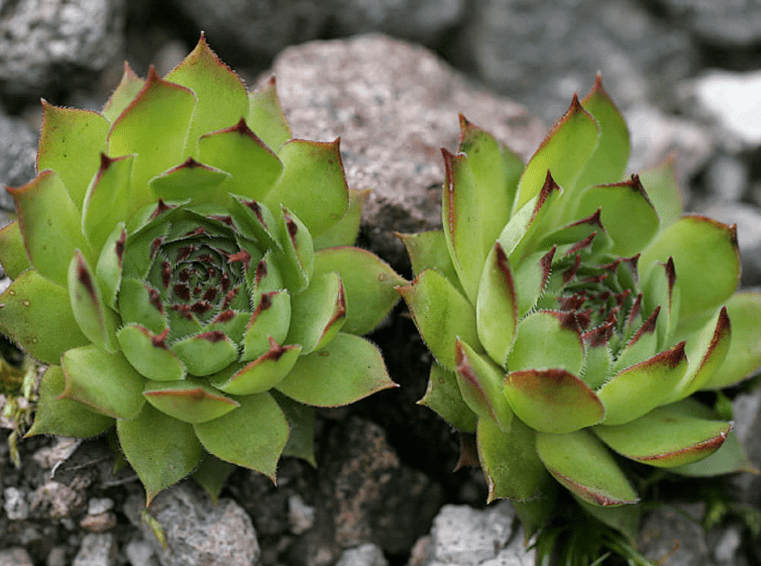
In conclusion, the houseleek plant is a versatile and beautiful addition to any garden or indoor space. With proper care and maintenance, it can thrive and provide both aesthetic and health benefits. Whether you are an experienced gardener or just starting out, the houseleek plant is worth considering for its unique qualities.
Cultivation of the Houseleek Plant
Subsection: Ideal Growing Conditions
Discuss the optimal conditions for growing houseleek, including light requirements, soil preferences, and temperature tolerance.
Houseleek plants thrive in bright, indirect sunlight, making them ideal for indoor spaces near a window or outdoors in a garden with partial shade. They prefer well-draining soil with a slightly acidic to neutral pH level. A cactus or succulent potting mix is ideal for houseleek plants, as it provides the necessary drainage and nutrients. It’s important to avoid overwatering, as houseleeks are drought-tolerant succulents and can rot if their roots are constantly wet. They also prefer warmer temperatures and can withstand hot and dry conditions, making them a great choice for arid climates. With the right growing conditions, houseleek plants can thrive and provide both aesthetic beauty and potential health benefits through their anti-inflammatory and antimicrobial properties.
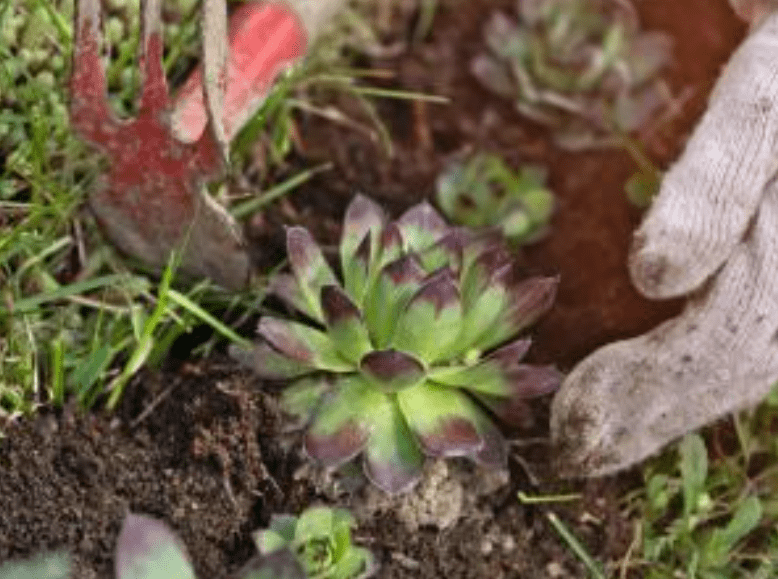
Explain how the plant’s drought-resistant nature makes it suitable for various environments.
The Houseleek plant is an excellent choice for various environments due to its drought-resistant nature. This means that it can thrive in areas with limited water availability, making it suitable for arid regions or locations with irregular rainfall patterns. The plant has the ability to store water in its leaves, allowing it to withstand dry conditions and periods of water scarcity. This makes it a low-maintenance and resilient option for both indoor and outdoor settings. Additionally, its ability to tolerate hot temperatures and dry soil further adds to its adaptability in different environments. Whether it’s in a sunny window sill or a rocky garden, the Houseleek plant can thrive and add beauty to its surroundings. Its hardy nature makes it a great choice for those looking for a low-maintenance and versatile plant option.
Subsection: Planting and Propagation
Provide a step-by-step guide on planting houseleek, whether in the garden, containers, or rockeries.
Planting houseleek can be done in various environments, including the garden, containers, or rockeries. Here is a step-by-step guide on how to plant houseleek:
- Choose a suitable location: Houseleek plants thrive in well-draining soil and prefer sunny or partially shaded areas. Select a location that receives adequate sunlight and has well-draining soil, whether it’s in the garden, containers, or rockeries.
- Prepare the soil: If planting in the garden or rockeries, ensure the soil is well-draining and amend it with organic matter if necessary. If planting in containers, use a well-draining potting mix.
- Plant the houseleek: Gently remove the houseleek plant from its nursery container and carefully loosen the roots. Dig a small hole in the soil or container and place the plant in, covering the roots with soil and pressing it down gently to secure the plant.
- Watering: After planting, water the houseleek thoroughly to help establish the roots. Once established, houseleek is drought-resistant and requires minimal watering.
- Maintenance: Houseleek plants are low-maintenance and require minimal care. Keep an eye on them for any signs of pests or diseases and remove any dead or faded leaves to promote healthy growth.
By following these steps, you can successfully plant houseleek in various environments and enjoy its beauty and resilience in your home or garden.
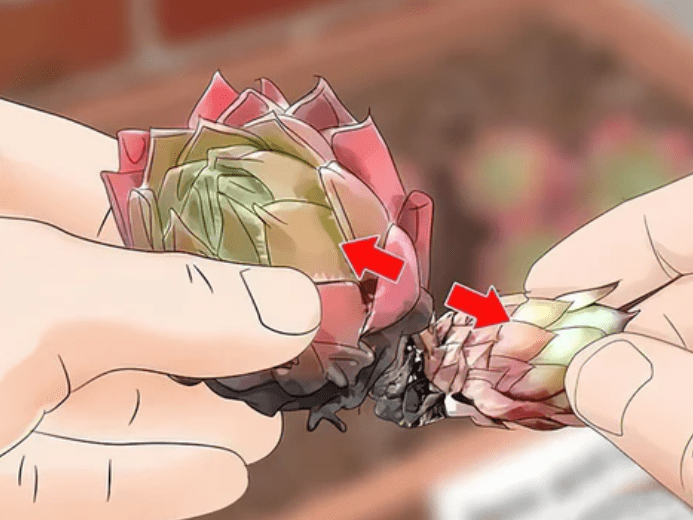
Offer tips on propagating houseleek through offsets or seeds, with a focus on ensuring healthy growth.
Propagating houseleek through offsets or seeds is a great way to ensure healthy growth. To propagate houseleek through offsets, gently remove the offsets from the main plant and plant them in well-draining soil. Make sure to water the offsets after planting and keep the soil moist until they establish roots.
If you want to propagate houseleek through seeds, sow the seeds in well-draining soil and keep them moist until they germinate. Once the seedlings have established, you can transplant them into their own containers or into the garden.
When planting houseleek, it’s important to ensure healthy growth by providing the right conditions. Make sure the soil is well-draining and avoid overwatering, as houseleek is drought-resistant and prefers minimal watering. Additionally, keep an eye on the plants for any signs of pests or diseases and remove any dead or faded leaves to promote healthy growth.
By following these tips, you can successfully propagate and grow houseleek, enjoying its beauty and resilience in your home or garden.
Subsection: Watering and Fertilization
Explain the watering needs of the houseleek plant, emphasizing the importance of avoiding overwatering.
Houseleek plants have low watering needs and are drought-resistant, so it’s important to avoid overwatering them. When planting houseleek, make sure the soil is well-draining to prevent water from pooling around the roots. After planting offsets, keep the soil moist until they establish roots, but be cautious not to water excessively. If propagating through seeds, keep the soil moist until the seeds germinate, and then reduce watering once the seedlings have established. Overwatering can lead to root rot and other issues, so it’s best to err on the side of underwatering rather than overwatering. Monitor the soil moisture and only water when the top inch of soil is dry. By providing the right amount of water and avoiding overwatering, you can help your houseleek plant thrive and stay healthy.
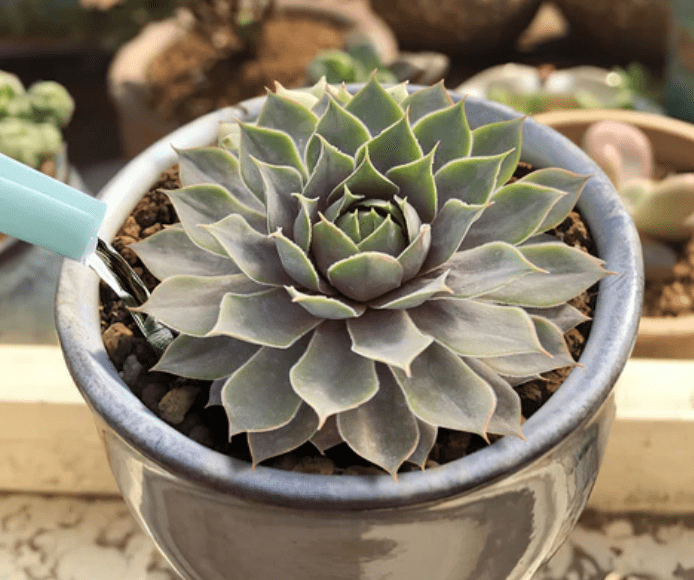
Discuss fertilization practices and how to maintain nutrient balance without overfeeding.
Houseleek plants are low-maintenance and have low watering needs, making them perfect for those who may forget to water their plants regularly. It’s important to avoid overwatering houseleek plants, as they are drought-resistant and excessive water can lead to root rot and other issues. When planting houseleek, it’s crucial to use well-draining soil to prevent water from pooling around the roots. After planting offsets or propagating through seeds, keep the soil moist until the plants establish roots or the seeds germinate, but be cautious not to water excessively.
In terms of fertilization, houseleek plants don’t require heavy feeding. It’s important to maintain a nutrient balance without overfeeding the plants. Using a balanced, all-purpose fertilizer once or twice a year in the spring and summer should be sufficient. Overfeeding can lead to excessive growth and weaken the plant’s natural resistance to pests and diseases.
To maintain the nutrient balance without overfeeding, it’s important to monitor the plant’s growth and adjust the fertilization accordingly. It’s best to use a diluted fertilizer solution and to fertilize sparingly, especially if the plant is thriving and growing well without additional fertilization. By providing the right amount of water and carefully monitoring the plant’s nutrient needs, you can help your houseleek plant thrive and stay healthy without overfeeding.
Subsection: Common Pests and Diseases
Identify common pests and diseases that may affect the houseleek plant.
Houseleek plants are generally hardy and resistant to pests and diseases, but there are a few common issues to look out for. Aphids, spider mites, and mealybugs are common pests that can affect houseleek plants. These pests can be controlled with insecticidal soap or neem oil. It’s important to regularly check the plants for any signs of infestation and take action promptly to prevent the spread of pests.
Root rot and fungal diseases can also be a concern for houseleek plants, especially if they are overwatered or planted in soil that doesn’t provide adequate drainage. To prevent these issues, it’s important to plant houseleek in well-draining soil and avoid overwatering. It’s also helpful to periodically remove any dead or decaying leaves to promote air circulation and prevent the growth of fungi.
By being proactive in monitoring for pests and diseases, and taking steps to prevent overfeeding and overwatering, you can help your houseleek plant stay healthy and vibrant.
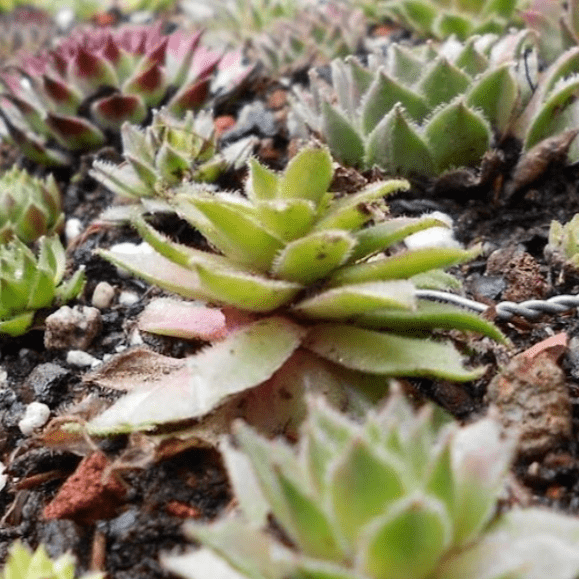
Provide solutions for prevention and treatment, ensuring the plant remains healthy and vibrant.
Houseleek plants are susceptible to pests such as aphids, spider mites, and mealybugs. To prevent and treat these pests, it is important to regularly check the plants for any signs of infestation and take prompt action. Insecticidal soap or neem oil can be used to control these pests effectively. Additionally, it is important to ensure that the houseleek plants are planted in well-draining soil to prevent root rot and fungal diseases. Overwatering should be avoided, and any dead or decaying leaves should be removed to promote air circulation and prevent the growth of fungi. By being proactive in monitoring for pests and diseases, and taking steps to prevent overfeeding and overwatering, you can help your houseleek plant remain healthy and vibrant. It is important to provide the necessary care and attention to ensure the health and longevity of your houseleek plant.
Benefits of Growing Houseleek
Subsection: Aesthetic Appeal
Discuss how houseleek plants enhance garden aesthetics with their unique shapes, colors, and textures
Houseleek plants are a great addition to any garden due to their unique shapes, colors, and textures. Their rosette-shaped leaves come in a variety of colors, from green to purple to red, adding a beautiful pop of color to your garden. The succulent nature of the leaves gives them a distinct texture that adds visual interest to the overall garden landscape. These plants also come in different sizes, making them versatile for different garden arrangements. Whether you have a small container garden or a larger outdoor space, houseleek plants can enhance the overall aesthetic with their eye-catching appearance. Their low maintenance nature and ability to thrive in various conditions make them an excellent choice for adding visual appeal to your garden.
Mention their versatility in various garden designs, from rock gardens to green roofs.
Houseleek plants are an excellent addition to any garden due to their versatility in various garden designs, from rock gardens to green roofs. Their unique shapes, colors, and textures make them stand out and can enhance the overall aesthetic appeal of the garden. The rosette-shaped leaves of houseleek plants come in a variety of colors, ranging from green to purple to red, adding a beautiful pop of color to any garden. Their succulent nature gives them a distinct texture that adds visual interest to the overall garden landscape. In addition to their visual appeal, houseleek plants come in different sizes, making them versatile for different garden arrangements. Whether you have a small container garden or a larger outdoor space, houseleek plants can enhance the overall aesthetic with their eye-catching appearance. Their low maintenance nature and ability to thrive in various conditions make them an excellent choice for adding visual appeal to your garden. Whether you are creating a rock garden, a traditional garden bed, or even a green roof, houseleek plants can be a valuable addition to enhance the beauty of your garden.
Subsection: Low Maintenance and Environmental Benefits
Highlight the low-maintenance nature of houseleek plants, making them ideal for busy gardeners or those in challenging climates.
Houseleek plants are a great choice for busy gardeners or those living in challenging climates due to their low-maintenance nature. These resilient plants require minimal care, making them perfect for those with a busy schedule or limited gardening experience. They are drought-tolerant and can thrive in various soil conditions, making them an ideal choice for gardens in arid or challenging climates. In addition, their ability to withstand harsh weather conditions and temperature fluctuations makes them a resilient and low-maintenance option for any garden. With their unique shapes, colors, and textures, houseleek plants can add visual interest and beauty to any garden with minimal effort. Overall, their low-maintenance nature and ability to thrive in challenging conditions make them an excellent choice for busy gardeners or those looking to add a touch of beauty to their outdoor space with minimal upkeep.
Discuss the environmental benefits, such as their role in reducing soil erosion and attracting beneficial insects.
Houseleek plants have many environmental benefits, including their ability to reduce soil erosion and attract beneficial insects. These plants have shallow roots that help to stabilize the soil, preventing erosion and protecting the surrounding landscape. In addition, houseleek plants produce small, star-shaped flowers that attract bees and other pollinators, making them an important part of the ecosystem. By planting houseleek in your garden, you can help support local wildlife and contribute to a healthier environment. Additionally, these plants are low-maintenance and require minimal watering and care, reducing the need for harmful chemical fertilizers and pesticides. Overall, houseleek plants are a great choice for environmentally conscious gardeners looking to create a sustainable and beautiful outdoor space.
Subsection: Medicinal and Traditional Uses
Explore the traditional medicinal uses of houseleek, including its application in folk remedies for skin conditions and inflammation.
Houseleek, also known as Sempervivum, has a long history of traditional medicinal uses. It has been used in folk remedies for various skin conditions and inflammation. The gel-like substance found in the leaves of houseleek has been used topically to soothe burns, cuts, and insect bites. Its anti-inflammatory properties make it an effective remedy for reducing swelling and pain. Additionally, houseleek has been used to treat skin conditions such as eczema and dermatitis. Its natural antiseptic and antimicrobial properties make it a valuable ingredient in traditional herbal medicine. Houseleek has also been used internally to promote digestive health and boost the immune system. Overall, houseleek has a wide range of traditional medicinal uses and continues to be valued for its therapeutic properties.
Provide a disclaimer about modern medicinal use and the importance of consulting a healthcare professional.
Houseleek has been used in folk remedies for various skin conditions and inflammation for many years. The gel-like substance found in the leaves of houseleek has been used topically to soothe burns, cuts, and insect bites. Its anti-inflammatory properties make it an effective remedy for reducing swelling and pain. Additionally, houseleek has been used to treat skin conditions such as eczema and dermatitis. Its natural antiseptic and antimicrobial properties make it a valuable ingredient in traditional herbal medicine. Houseleek has also been used internally to promote digestive health and boost the immune system. However, it’s important to note that while houseleek has a wide range of traditional medicinal uses, modern medicinal use and dosage should be discussed with a healthcare professional before use. It’s always important to consult a healthcare professional before starting any new herbal remedy or supplement to ensure it is safe and appropriate for your individual health needs.
Houseleek Plant in Landscaping
Creative Ways to Incorporate Houseleek
Houseleek, also known as Sempervivum, is a versatile and low-maintenance plant that can add a unique and attractive touch to your landscaping. You can incorporate houseleek in your garden by planting it in between rocks, in crevices, or on walls to create a beautiful and natural look. The plant’s rosette-shaped leaves come in a variety of colors and can add a pop of color to your garden. Houseleek is also drought-resistant, making it an ideal plant for dry and rocky areas. Additionally, you can use houseleek in container gardens or as part of a green roof to create a visually interesting and sustainable landscape. With its diverse uses and aesthetic appeal, houseleek is a great addition to any landscaping project.
Conclusion
In conclusion, the houseleek plant is a versatile and low-maintenance plant that can be a great addition to any garden. Its ability to thrive in various conditions and its numerous health benefits make it a valuable plant to have. Whether you are looking to add some greenery to your garden or to improve your health, the houseleek plant is definitely worth considering. With the right care and attention, you can enjoy the beauty and benefits of this unique plant for years to come.
Frequently asked questions And Answer
A houseleek plant, also known as Sempervivum, is a succulent plant that is known for its rosette-shaped leaves and ability to thrive in various climates and conditions.
Houseleek plants are low-maintenance and can be easily cultivated in well-draining soil and a sunny location. They are drought-tolerant and do not require frequent watering.
Houseleek plants are known for their air-purifying properties and can help improve indoor air quality. They are also believed to have medicinal properties and have been used in traditional medicine for various ailments.
Yes, houseleek plants can be grown indoors as long as they are provided with sufficient sunlight and well-draining soil. They are great for adding a touch of greenery to indoor spaces.
Houseleek plants are non-toxic to pets, making them a safe and pet-friendly option for indoor and outdoor cultivation.
Houseleek plants can be easily propagated by removing offsets, or “pups,” from the mother plant and replanting them in a separate location.
There are numerous varieties of houseleek plants, each with unique colors and leaf shapes. Some popular varieties include Sempervivum tectorum, Sempervivum arachnoideum, and Sempervivum calcareum.
